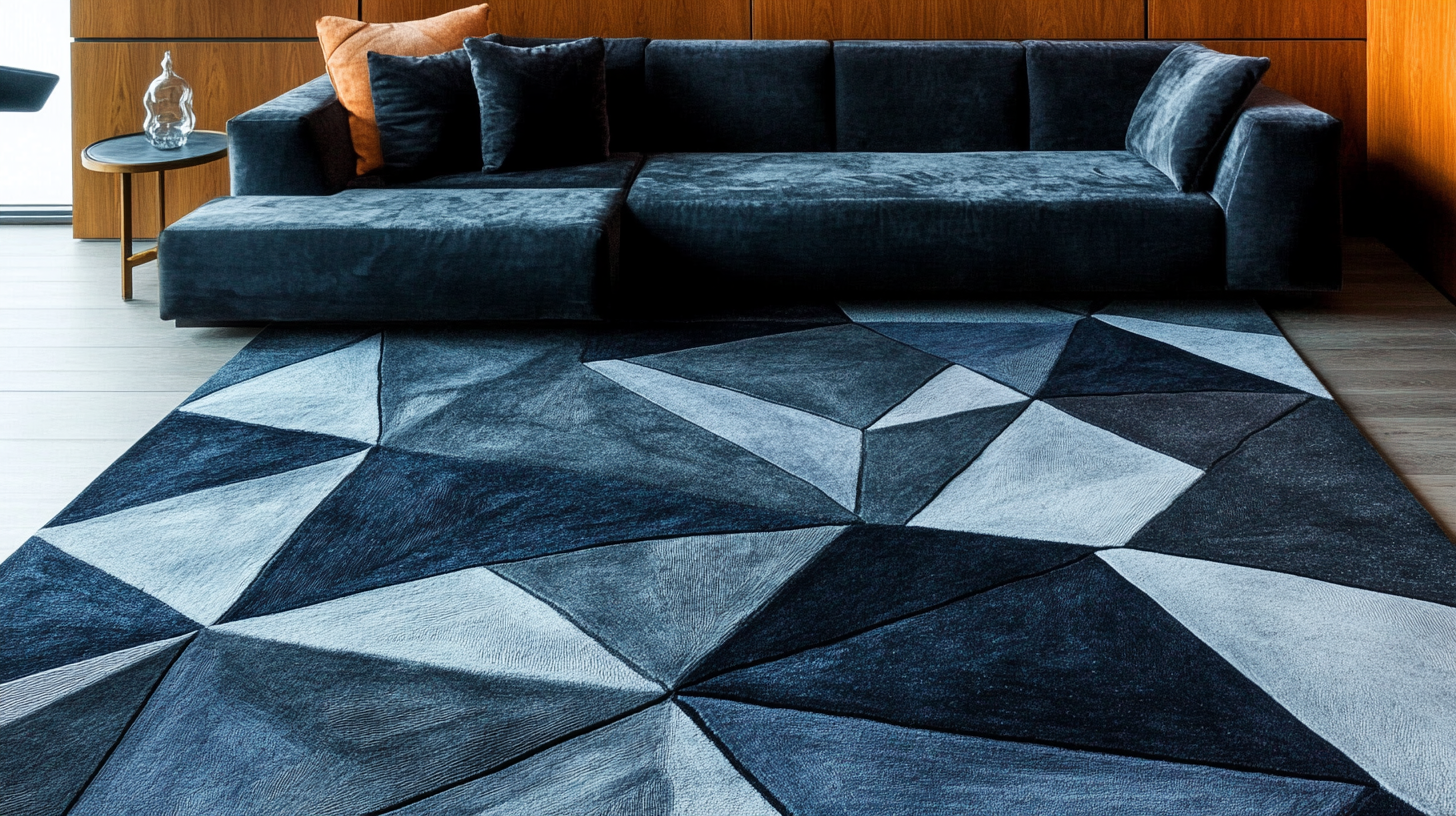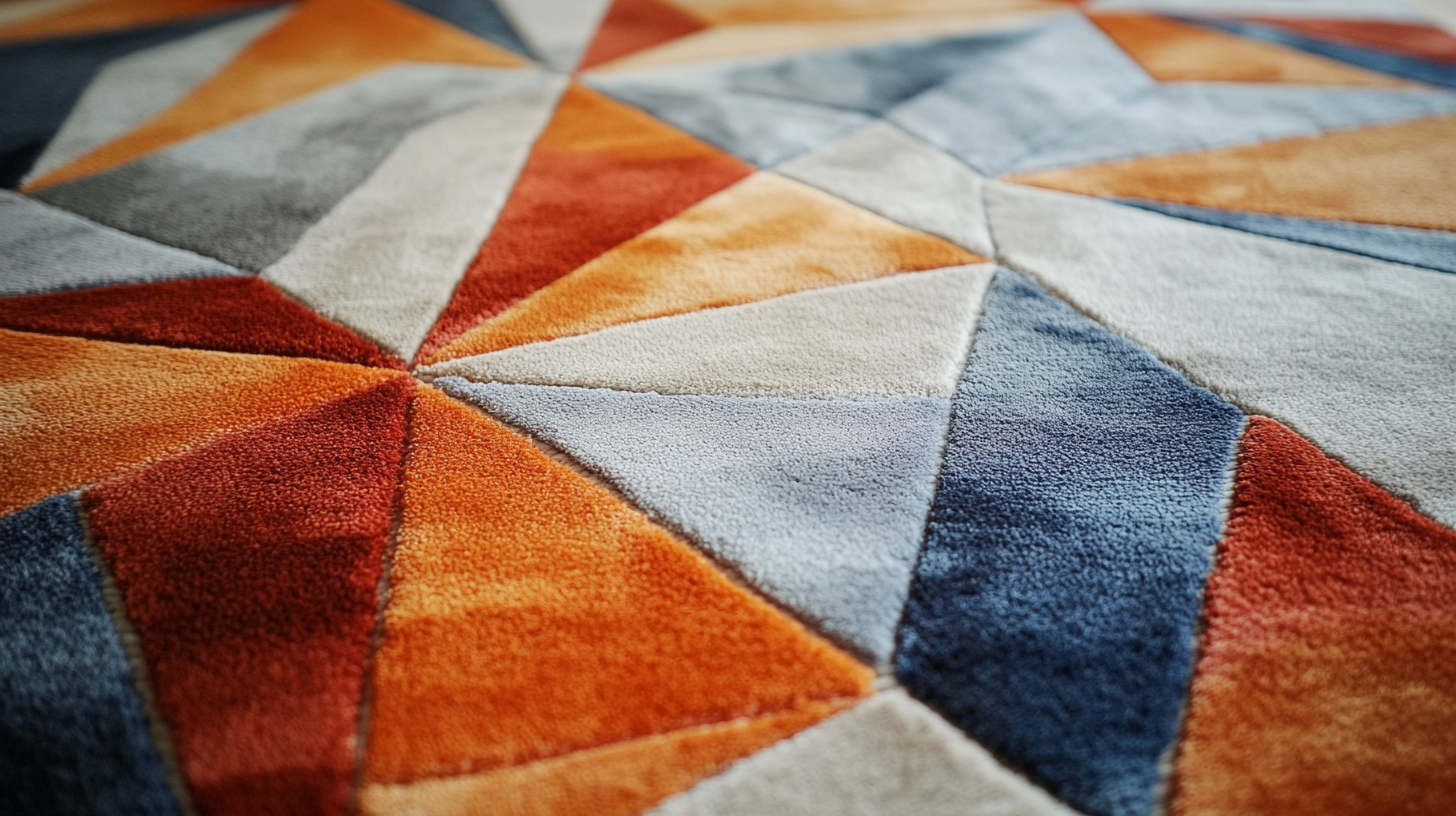
-
Home
-
About Us
-
Products
-
News
-
Blog
-
Contact Us
Leave Your Message

As we look ahead to 2025, the home decor market is poised for exciting transformations, particularly in the realm of area rugs. Among the trending styles, Geometric Rugs have captured a significant share of consumer interest, projected to grow at an impressive rate. According to a recent report by Market Research Future, the global area rug market is anticipated to reach USD 20 billion by 2025, with geometric patterns leading the way due to their versatility and modern aesthetic appeal. These rugs not only add visual intrigue but also serve as a canvas for personal expression within home interiors. With consumers increasingly leaning towards designs that blend tradition with contemporary flair, geometric rugs are emerging as a favorite choice among homeowners and interior designers alike. This blog will explore the latest insights into this trend, offering guidance on selecting the perfect geometric rug to enhance any living space.

As we approach 2025, the interior design landscape is witnessing a significant shift towards geometric rugs, a trend that reflects modern aesthetics and consumer preferences. These rugs, characterized by their bold patterns and vibrant colors, are not just about functionality; they serve as statement pieces that elevate spaces. With the rise of minimalistic and contemporary home decor styles, geometric designs offer a captivating contrast that draws the eye and adds depth to any room.

Market insights indicate that consumers are increasingly prioritizing personalization in their home environments. Geometric rugs provide an ideal solution, as they can seamlessly integrate with a variety of decor styles—from sleek Scandinavian to eclectic Bohemian. Additionally, the growing fascination with sustainable materials means that many manufacturers are focusing on eco-friendly options, appealing to environmentally conscious buyers. As this trend continues to evolve, it is clear that geometric rugs will play a pivotal role in shaping the future of home decor, influencing purchasing choices and inspiring creative design solutions.
As we move towards 2025, the home decor landscape is witnessing a remarkable shift, particularly in the realm of geometric rugs. A significant driver of this transformation is the increasing demand for sustainable and eco-friendly materials. According to a recent report, the textile flooring market is expected to soar to USD 17.9 billion by 2035, fueled predominantly by an emphasis on sustainability. Consumers are now more conscientious about their purchases, seeking products that reflect their values and contribute to a greener planet.

The trend towards sustainable home decor products, including geometric rugs, is being propelled by an evolving consumer mindset that prioritizes environmental responsibility. As noted in industry insights, the integration of recycled and natural fibers into rug designs is not just a passing trend but a critical demand. This aligns with the broader home design trends noted for 2025, which emphasize the use of eco-friendly materials alongside innovative textures and patterns. By focusing on sustainability, brands are not only appealing to a growing market segment but are also setting new standards for how home decor can harmoniously coexist with nature.
As we delve into the future of home decor, one significant trend emerging in 2025 is the influence of technology on geometric rug patterns. Innovations in textile design allow for intricate, customizable patterns that were previously unimaginable. With advancements in digital printing, homeowners can now choose from a plethora of geometric designs that match their unique style and preferences. This technology not only enhances visual appeal but also ensures that rugs are produced with greater precision and durability.
Furthermore, smart fabric technology is revolutionizing how we interact with our home textiles. Imagine rugs that can change color or pattern at the touch of a button, adapting to different moods or occasions. These innovations are not just about aesthetics; they also introduce functionality, with materials that are stain-resistant, easy to clean, and even eco-friendly. As tech continues to intertwine with interior design, geometric rugs are becoming a canvas for creativity and expression, setting the stage for a more personalized and dynamic home environment in the years to come.
As we delve into the home decor market of 2025, it's crucial to understand the demographics driving the demand for geometric rugs. According to a recent report by Grand View Research, the global home decor market is expected to reach $1,035 billion by 2025, with area rugs comprising a significant portion of this growth. Specifically, geometric rugs have captured the interest of millennials and Gen Z, who prioritize modern aesthetics and sustainable options in their home decor choices. A survey by Statista indicates that 62% of homeowners aged 25-40 consider geometric designs as a key feature in their purchasing decisions.
Additionally, geographic trends reveal that urban dwellers are leading the charge in rug purchases. The National Home Furnishings Association reports that consumers in metropolitan areas are 1.5 times more likely to invest in geometric rugs compared to those in rural regions. This urban demographic not only seeks visually appealing designs but also tends to favor eco-friendly materials, pushing manufacturers to innovate in sustainable production methods. As such, the convergence of style and sustainability is expected to shape the landscape of geometric rug sales in the coming years.
As consumers become more environmentally conscious, the home decor market is seeing a significant shift towards sustainable options, particularly in the rug segment. According to a report by Grand View Research, the global sustainable flooring market is projected to reach $492.2 billion by 2027, with rugs made from alternative materials such as bamboo, jute, and recycled polyester gaining traction. These eco-friendly materials not only reduce environmental impact but also offer unique aesthetic qualities that appeal to the growing demographic of environmentally responsible consumers.
Additionally, a recent survey by the Sustainable Furnishings Council found that 72% of consumers are willing to pay more for sustainably sourced products. This increasing demand for sustainable home decor options means that manufacturers are increasingly investing in eco-friendly production processes. Brands that prioritize sustainability in their collections are likely to resonate with the values of today's consumers. Furthermore, the trend towards geometric designs in rugs offers a contemporary way to enhance interior spaces while aligning with eco-conscious choices. As the market evolves, we can expect to see continued innovation in the textile industry, emphasizing both style and sustainability.
| Category | Material Type | Sustainability Rating | Average Price (USD) | Market Demand (2025 Est.) |
|---|---|---|---|---|
| Geometric Rugs | Recycled Plastic | High | $150 | 20% increase |
| Geometric Rugs | Bamboo Fiber | Medium | $200 | 15% increase |
| Geometric Rugs | Hemp | Very High | $180 | 25% increase |
| Geometric Rugs | Organic Cotton | High | $160 | 18% increase |